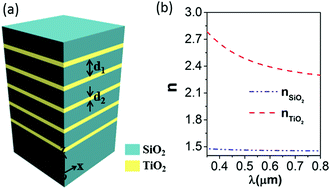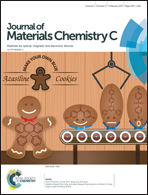Tunable high reflective bands to improve quantum dot white light-emitting diodes
Abstract
Quantum dot (QD) light emitting diodes (LEDs), whose narrow emission bandwidth can be tuned by changing the type and size of the QDs, show pure and saturated colors, and thus become a new generation of LEDs. However, the brightness of QD-LEDs should be increased to be used in practical applications. Here, we propose a simple 5-layered hetero-structure (alternating TiO2 and SiO2 layers) on a SiO2 substrate, which can provide multiple high reflection bands (HRBs) corresponding to UV, blue, green and red colors, in which the UV band can be used as excitation and the other bands can generate white light. On the one hand, HRBs can enhance the light extraction efficiency of fluorescence. On the other hand, HRBs can enhance the light–matter interaction (e.g., UV or violet light excitation of fluorescent materials) due to the interference from the multiple reflection and incidence. Thus the HRBs are capable of enhancing the brightness of white QD-LEDs efficiently. Moreover, our structure has fewer layers than one-dimensional photonic crystals, which leads to easier fabrications. Reflection bands of our structure can be adjusted by tuning the thickness of layers according to practical applications. The structure is environmentally friendly and can be used in displays, infrared illumination, optical communication, etc.


 Please wait while we load your content...
Please wait while we load your content...